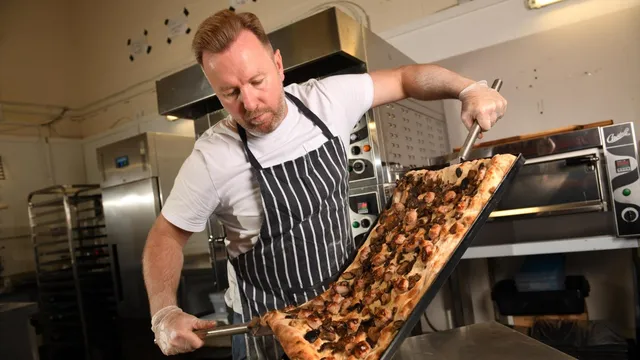
Irish restaurants are reborn after the toughest year in history
2025-01-05 00:01- The Restaurants Association of Ireland reported over 600 closures of food-led hospitality businesses in the year leading up to 2025.
- In October 2024, it was estimated that an additional thousand closures could occur following a challenging government budget.
- Despite these closures, there is hope as many businesses are reimagining their concepts to adapt to changing conditions.
Express your sentiment!
Insights
In Ireland, the hospitality industry faced significant challenges in the lead-up to 2025, particularly due to economic factors. The Restaurants Association of Ireland reported that more than 600 food-led hospitality businesses closed in the year ending in late 2024. This alarming trend was attributed to several difficulties, including the government's decision to increase VAT to 13.5 percent. The increase burdened operators who were already struggling to recover from previous disruptions. Moreover, in October 2024, the association projected that an additional thousand closures could follow due to a perceived neglect from the government regarding support and resources. Many business owners expressed their frustrations over what they called a 'tone-deaf' budget and a lack of provisions aimed at helping the sector recover. This situation led to an air of hopelessness among many in Ireland's hospitality industry, making stakeholders question the future viability of restaurants and dining establishments across the region. In light of the closures, there was a notable shift within the dining scene, with many eateries opting for reimagined concepts as a way to adapt to the challenging market conditions. New trends, such as collaborations with unique chefs and innovative dining experiences, emerged as establishments sought to differentiate themselves and attract customers. While the closures numbered in the hundreds, the resilience shown by some business owners was evident as they embraced creativity to innovate and survive. As 2025 began, the Irish hospitality landscape appeared altered by both closures and creative responses from remaining businesses. Observers noted that the industry's future was uncertain, but there was an underlying hope that the innovations and reimaginings could provide a pathway to recovery for those who remained. The troubling statistics emphasized the need for urgent government intervention to support the hospitality sector, ensuring that it can bounce back from the hardships it faced in previous years.
Contexts
The hospitality industry in Ireland plays a crucial role in the economy, contributing to employment and tourism revenue. However, recent changes to the Value Added Tax (VAT) rate have sparked discussions regarding their impact on this vital sector. The increase in VAT, implemented to support government revenue, has raised concerns among hospitality providers about its potential effects on pricing, consumer behavior, and overall industry viability. Operators in the hospitality sector, including hotels, restaurants, and bars, face the challenge of balancing the increased costs associated with higher VAT against the expectations of consumers for reasonable pricing and quality service. One primary concern for hospitality businesses is the potential for reduced customer spending as prices rise in response to the VAT increase. When businesses are forced to pass on these costs to consumers, there may be a decline in visitation rates, particularly among price-sensitive customers. This apprehension is particularly acute in a competitive landscape where alternatives exist. The fears that consumers may choose to dine out less frequently or opt for lower-priced alternatives could significantly affect the revenue streams of hospitality establishments, which often operate on thin margins. Additionally, as workforce fluctuations occur due to variable demand, businesses may struggle to retain skilled staff, further complicating recovery efforts post-implementation. Moreover, the VAT increase can also have a broader effect on tourism, which is a cornerstone of the Irish economy. International visitors, who often participate in various hospitality services, might be deterred by higher costs, impacting tourist numbers. This decline in tourism can have a cascading effect on local economies, particularly in areas heavily reliant on hospitality services. Destination marketing efforts may need to highlight the unique value propositions of Irish hospitality to mitigate this effect and attract visitors despite the price increases. Additionally, perceived value from international visitors can change, leading to shifts in their travel planning and spending behavior. In summary, the increase in VAT poses significant challenges for the Irish hospitality industry, affecting pricing strategies, consumer behavior, and the overall attractiveness of the sector to both domestic and international patrons. While the intention behind the rate increase is to bolster government revenues, the long-term implications on business sustainability, job retention, and tourism must be carefully assessed. Stakeholders in the hospitality sector must advocate for supportive measures to deal with potential negative impacts and work towards strategies that maintain the vibrancy of Ireland's hospitality industry, ensuring it remains a key driver of economic growth.